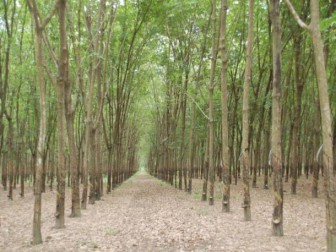 Efforts by 3 main producers to boost prices have not seen success
Efforts by 3 main producers to boost prices have not seen success
Bearish trends will continue in natural rubber in the absence of any major positive development on the macro-economic front that can boost demand. Higher imports by tyre manufacturers, too, have been putting pressure on domestic rubber prices.
Apart from a slight surge during mid-September, rubber prices have largely been on a downward slide. RSS-4 prices at National Multi Commodity Exchange (NMCE) had seen an all-time high of Rs 247.90 per kg in April 2011. By February this year, prices came down to a low of Rs 184.25 and slightly recovered to Rs 201 levels in the end of March. Again by April-end prices slipped to Rs 186 and then gradually fell to Rs 165 levels in August. In August it had touched a recent low of Rs 159.50 per kg.
However, by mid-September the third round of quantitative easing by the US Fed and the announcement of the bond-buying programme by the European Union, which lifted all major commodity counters, also pushed rubber prices up. Natural rubber went to a high of Rs 196.50 by September 17. However, as the euro zone and US concerns once again started resurfacing, rubber prices too fell for want of any major cue. As on November 9, rubber was priced Rs 171 per kg.
“Apart from the macro-economic developments, factors like demand and supply too have not been much supportive of prices. Imports have been significantly higher and this has curbed demand for domestic rubber, which is priced higher than that in the international market,” said Joyal Thomas, analyst, Geojit Comtrade.
Between April and October, imports have surged 31 per cent to 1,30,966 tonnes from 99,760 tonnes during the same period last year. In October alone, imports surged 113 per cent to 18,326 tonnes from 8,574 tonnes in the same month last year. The tyre manufacturing industry has been resorting to imports due to the lower prices prevailing in major rubber producing countries like Malaysia and Thailand.
Bangkok rubber prices were at Rs 162.50 per kg on November 9 – almost Rs 10 lower than Indian prices. Malaysian rubber was priced even lower at Rs 149.90 on the same day.
Efforts by the three main rubber producers — Thailand, Malaysia and Indonesia — to boost prices have not seen much success till now. The three countries have started reducing exports for a six-month period beginning October 1 and are also cutting ageing trees to support sagging prices. However, lower demand from the US, Europe and China has been thwarting these efforts.
“For the near term, prices will remain bearish. The immediate support level is Rs 167, followed by Rs 164,” said Thomas.
However, things can change if there are some positive development in the US, Europe and China. It has to be seen how the re-elected Obama administration tackles its financial problems. In China, if the new administration takes positive measures to boost economy as well as ease inflation, rubber exports could see some upside.
Source: My Digital FC




























